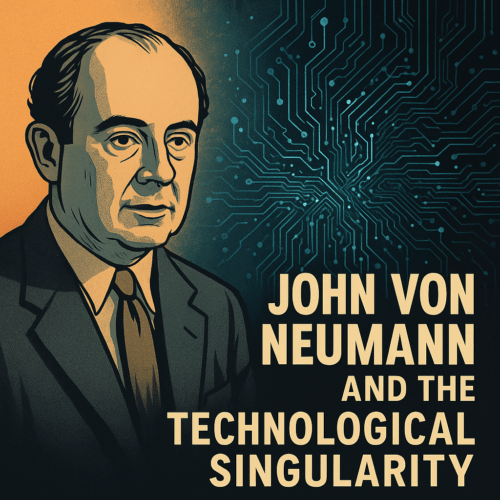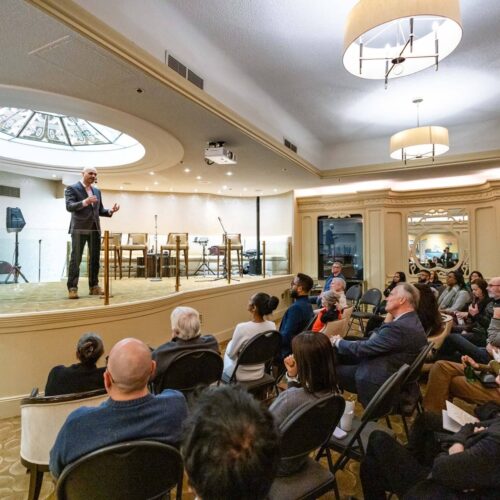Transhumanism Goes to Campus
Jon Nichols / Op Ed
Posted on: November 15, 2013 / Last Modified: November 15, 2013
I feared I did it all wrong.
They just stared at me with moon eyes. They resembled car crash victims, dizzy and bewildered in the aftermath of a rear-end collision. I began to suspect I was the one who just drove the truck into their back bumper.
Five minutes previous I had given a lecture to 300 college freshmen on the subject of transhumanism. The class had been reading Feed by M.T. Anderson, a novel about future youth who get the Internet delivered directly to brains via neural implants. As a professor in the class, I wanted to stress to students that such transhuman technology is not a flight of fancy but is very much on its way to being a widespread reality.
Examples from the lecture included the “stretchy gold material” developed at the University of Michigan that could soon allow for the neural chip implants described in Feed, pictures of cybernetic limbs that are already helping the disabled to walk, and updates on how quantum computing will open many new doors of possibility, even the act of uploading one’s consciousness into either a computer as Ray Kurzweil suggests or an android body such as proposed by Dmitry Itskov.
Students, I asserted, could soon overcome certain learning impediments via “smart drugs” developed at the University of Pennsylvania that could enhance both memory and cognition. Iron Man, I argued, no longer belongs solely to the realm of comic books but to the reality of the 21st Century battlefield. Finally, as sex seldom seems to be far from the mind of college students, I described the subculture of individuals who own rudimentary “sexbots” and what may happen in the future as artificial intelligence systems increase in sophistication by orders of magnitude, causing a “mentational reformation.” Could Pris from Blade Runner be that far off? An exaggeration perhaps, but I wanted to spark discussion.
And discussion was of course the ultimate goal for the small group sessions after the lecture. I eagerly wanted to hear perspectives from this, the most technologically savvy class of college freshmen to date, on what I believe to be exciting advancements in the integration of humanity and technology. As they sat in their chairs, however, wrapped in their college “uniforms” of flip flops and baggy sweats, excitement was not what I received.
They were scared. I could almost smell it mixed with the aroma of their coffees.
“This freaks me out,” one of them said.
“Why?” I asked.
“It’s not natural,” she responded. “It’s not human.”
“This technology comes from human intelligence and ingenuity. Does that not lend it a bit of humanity?”
“You’re not human anymore if you’re just your brain uploaded into a computer,” a young man insisted.
“What stops you then from being human?” I asked. “Do you value your body more than the contents of your mind?”
“Well a human is something that eats, sleeps, and breathes,” another freshman said.
“Does that mean my dog is human?”
Polite laughter ensued, prompting a playful roll of the eyes from the student. It was not the best definition, but then most first semester freshmen are just taking their first steps towards becoming great critical thinkers. Still, the apprehensive comments kept coming. The students envisioned a world of disembodied “ghosts in the shell” and “terminator” drones that could think for themselves and hated humanity. But I had tried to convey so much excitement about the potential of transhumanism. In fact, I actually had to work to keep from painting an aureole around Kurzweil.
Oh no, I thought. I’ve really screwed this up.
So I requested they name at least one positive benefit of the technologies described in the lecture. I watched them think and there then came a dribble of benefits, mostly examples of how transhumanism could improve the quality of life for the disabled or infirmed. Then one student’s thoughts changed the whole tenor of the discussion.
“How much time and money do we spend just trying to stay alive?” she asked. “What if we didn’t have to do that?”
A wave-like grumble came across the class as they considered this. One student recalled my own, “overly basic” definition of “transhumanism” from lecture: “using technology to improve human existence.” I said that no matter how many vitamins you take or numbers of hours you spend in the gym, a human body is still a squishy thing, vulnerable to the inevitable entropy of age and disease. “Might there not be a better way?” I asked the freshmen. I decided to further press the thought.
“What about all the time and money we spend just to look ‘good’?” I asked. “All of the shampoo, the toothpaste, the cosmetics, and on the far end of things, plastic surgery? What if we didn’t need any of that in order to keep up a body that is gradually breaking down?”
“We could accomplish a lot if we didn’t have to think about any of that,” one student said.
“But it’s just not natural,” a man with short cropped hair said. “My faith says that only God can create and that we’re not supposed to mess with what God creates. We’re also not supposed to live forever.”
There came silent nods of agreement. A young man seated next to the previous speaker raised his hand.
“As technology advances I can imagine God saying, ‘what are they doing?’” he said. “But what if it’s the opposite? What if He looks at us and says, ‘Good! They figured out the secret just as I planned. Now they can handle their biology themselves’?”
The students, while perhaps not wholly onboard, were at least forced to contemplate the proposition. It made too much sense to ignore.
In no way did I wish to scare them. True, I wanted to show them the possible pitfalls of transhuman technology, but I certainly did not want them to fear the future. Their reactions of shock and their retreat to conservative stances took me by surprise. Then, as the students considered the situation calmly and rationally, at least a few of them began to see the technology as symbolic of human creativity and imagination and not an erasure of our humanity itself. With a bit of thought, automatic rejection gave way to open consideration.
Perhaps there is a lesson in that for the rest of the world as well.
About the Author:
 Jon Nichols is a science fiction writer who blogs about transhumanism and other topics at Esoteric Synaptic Events. He teaches English and Humanities at a small Midwestern university.
Jon Nichols is a science fiction writer who blogs about transhumanism and other topics at Esoteric Synaptic Events. He teaches English and Humanities at a small Midwestern university.
Related articles
- Transhuman: Titus Nachbauer’s Short Doc on Transhumanism
- A Transhumanist Manifesto
- Hamlet’s Transhumanist Dilemma: Will Technology Replace Biology?
- Zoltan Istvan: The Transhumanist Wager Is A Choice We’ll All Have To Make










